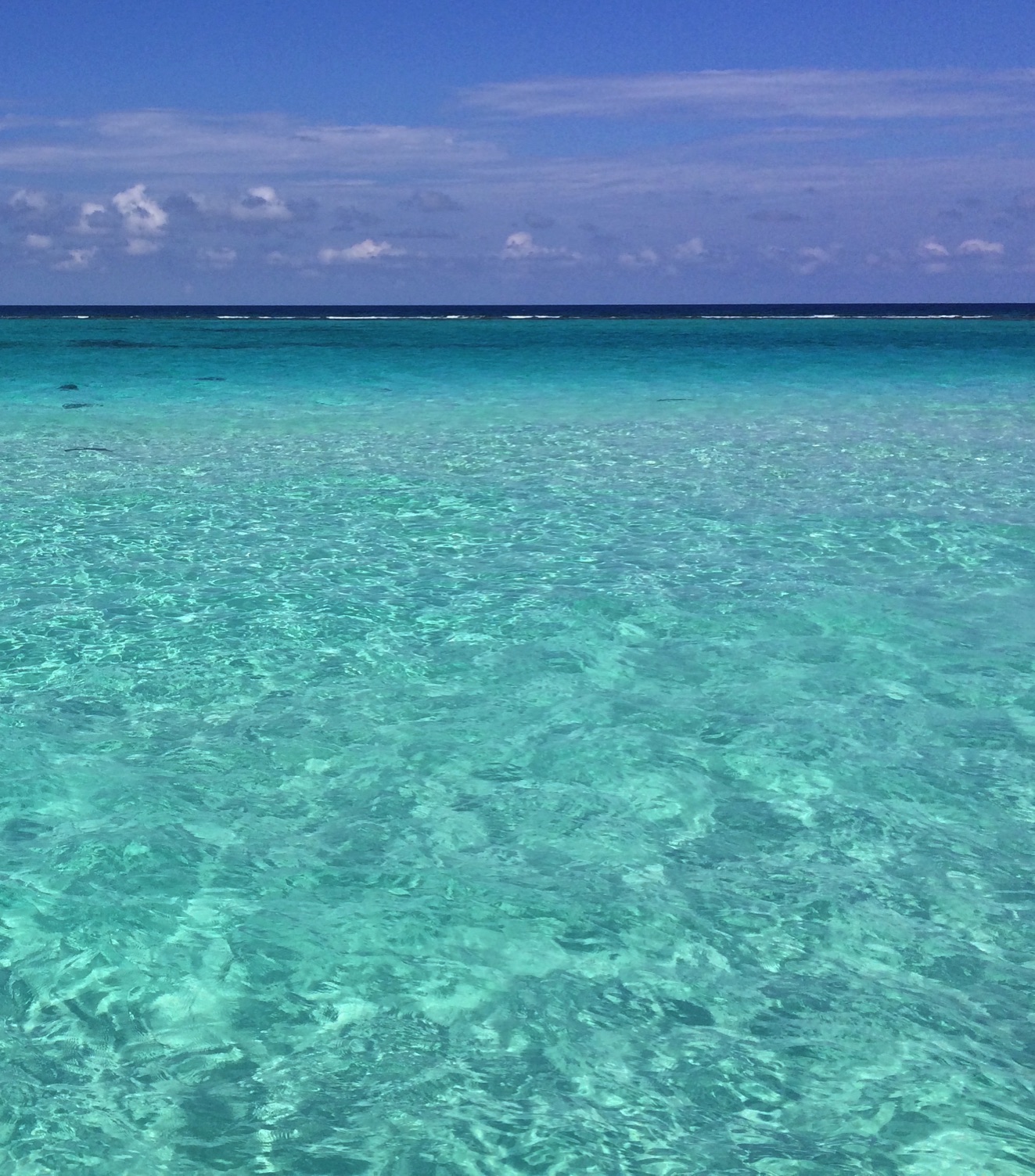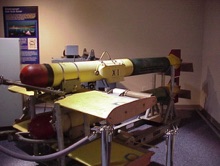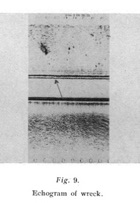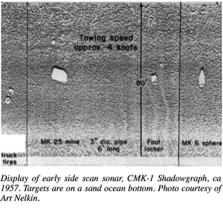MILESTONE CHRONOLOGY 1951 - 1960
1951-Hudson Laboratories is founded at Columbia University. The lab would produce a number of side scan sonars.
1954 – Dr Julius Hagemann writes “TP18 – A Proposed Short-Range High Definition Mine Detection Sonar.”
1956 - Dr. Willie Kunze delivers a lecture "General Aspects of Horizontal Echo Sounding Method to Shipping" at the International Meeting on Radiolocation, Hamburg, Germany, October, 1956. The talk shows an "echogram" of a shipwreck.
1957 – The U.S. Navy C-MK-1 Shadowgraph mine-hunting side scan sonar, contracted by the US. Navy in 1957 was a major milestone in the history of military side scan sonar. The project was a military/commercial collaboration among the U.S. Navy Mine Countermeasures Station, Panama City, Florida, Westinghouse and Clevite. At the Navy the project was under the direction of Dr. Julius Hagemann who had relocated from Germany in 1947. The system operated at two frequencies, 1.41 and 1.33 Mhz. It had a pulse length of 0.05 msec and a range swath of 80 and 160 feet. Image resolution was 3 inches. In order to produce high resolution the system used an innovative fixed focusing where the transducers were curved in both the horizontal and vertical direction.
The transducer development was by Westinghouse Research Labs in Pittsburgh and the ancillary towfish electronics were developed by the Westinghouse Ordnance Division (later Oceanic Division) in Baltimore. The Supervisor at Westinghouse was Joseph Laing who worked closely with Don Ream and Charlie Stewart at BuShips and with Dr. Hagemann, Jim Seawright and others at MDL. A mockup was constructed in Baltimore to make simulated tests at the Engineering Experiments Station (later David Taylor Model Basin) near Annapolis using a transducer supported by a motorized tracked carriage. Targets were placed on the bottom. The tests were extremely successful and probably constituted the first proof of this technology for bottom object technology and classification.
In order to utilize the focused beams, Clevite was contracted to supply a towfish with control surfaces (like an airplane) that would maintain a fixed altitude off the sea bottom. Initial sea tests commenced in 1957 in St. Andrews Bay in Panama City using targets of various sizes and shapes. These tests were also successful. (The above is from a private email to Martin Klein by Joe Laing of Westinghouse, March 19, 2002).
One of the designers of the Shadowgraph towfish at Westinghouse was Wadsworth Owen an aeronautical engineer. Later in life Owen, became a friend and mentor to Martin Klein and helped Klein learn about hydrodynamics, towing, cable cateneries and Leonard Pode's tables.
The graphic recorder for the Shadowgraph was a special design conceived at Westinghouse and built by the Alden Electronic & Impulse Recording Equipment Company of Brockton and Westboro, Massachusetts. The recorder used a non-linear helix in order to range correct the sonar images. The equations for the helices were written by Joe Laing and given to John Alden, president of Alden. Note that Alden recorders were used years later by Dr. Harold Edgerton for his “Mud Penetrator.”
-Dr. Kunze towed a pair of transducers so as to examine the sea floor on both sides of a ship at the same time.
1958 – Dr. Hagemann files patent “Facsimile Recording of Sonic Values of the Ocean Bottom” (remains classified until issued in 1980.
-Chesterman used a single ship-mounted transducer which was stabilised for the roll and yaw of the ship and in which the angle of depression could be altered remotely.
-Chesterman publishes the first account of the value of sonographs for indicating the form and composition of sea floors.
1960 - The ocean-going minesweeper USSVenture (MSO-496) is altered with two one ton hydraulic cranes and other equipment to support the classified Shadowgraph side scan sonar.



